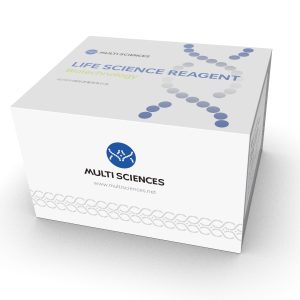HGNC ID: 1372
Target Abstract:
Carbonic anhydrases are a large family of zinc metalloenzymes that catalyze the reversible hydration of carbon dioxide. Carbonic anhydrases are involved in various biological processes, including respiration, calcification, acid-base balance, bone resorption, as well as the formation of aqueous humor, cerebrospinal fluid, saliva, and gastric acid. They have widespread tissue distribution and subcellular localization diversity.Carbonic anhydrase 14 (CA14) is a polypeptide composed of an extracellular N-terminal catalytic domain, a transmembrane domain, and a short intracellular C-terminal fragment with potential phosphorylation sites. CA14 is expressed on the cell bodies and axonal membranes of brain neurons, hepatocyte plasma membranes in the liver, and preferentially on the apical membrane of proximal tubules in the kidney. CA14 has the highest sequence similarity with another transmembrane CA isoform, CA12. However, they have different tissue-specific expression patterns and are thus likely to play different physiological roles. CA14 and CA4 can regulate the intracellular pH of hippocampal neurons by promoting chloride-bicarbonate exchange mediated by AE3.
CA14 Target Infomation Overview
- Target Symbol: CA14, carbonic anhydrase 14
- Gene Groups: Carbonic anhydrases
- Alias Names: carbonic anhydrase XIV
CA14, carbonic anhydrase 14 Target Infomation by Species
- Human
- Mouse
- Rat
Human CA14 Target Information
- Target Symbol: CA14, carbonic anhydrase 14
- Alias:
- CA-XIV
- carbonate dehydratase XIV
- carbonic anhydrase XIV
- carbonic dehydratase
- CAXiV
- NCBI_Gene: 23632
- UniProtKB: Q9ULX7
Human CA14 Predicted Functions
Predicted to enable carbonate dehydratase activity. Predicted to be involved in one-carbon metabolic process. Predicted to be integral component of membrane. Predicted to be active in plasma membrane.
Mouse Car14 Target Information
- Target Symbol: Car14, carbonic anhydrase 14
- Alias:
- AW536446
- CA XIV
- expressed sequence AW536446
- NCBI_Gene: 23831
Mouse Car14 Predicted Functions
Enables carbonate dehydratase activity. Predicted to be involved in one-carbon metabolic process. Predicted to act upstream of or within carbon dioxide transport and regulation of pH. Predicted to be located in membrane. Predicted to be integral component of membrane. Predicted to be active in plasma membrane. Is expressed in several structures, including central nervous system; cranium; epiblast; eye; and urinary system. Orthologous to human CA14 (carbonic anhydrase 14).
Rat Ca14 Target Information
- Target Symbol: Ca14, carbonic anhydrase 14
- Alias:
- Car14
- carbonic anhydrase XIV
- NCBI_Gene: 791259
- UniProtKB: A2IBE0
Rat Ca14 Predicted Functions
Predicted to enable carbonate dehydratase activity. Predicted to be involved in one-carbon metabolic process. Predicted to be integral component of membrane. Predicted to be active in plasma membrane. Orthologous to human CA14 (carbonic anhydrase 14).

